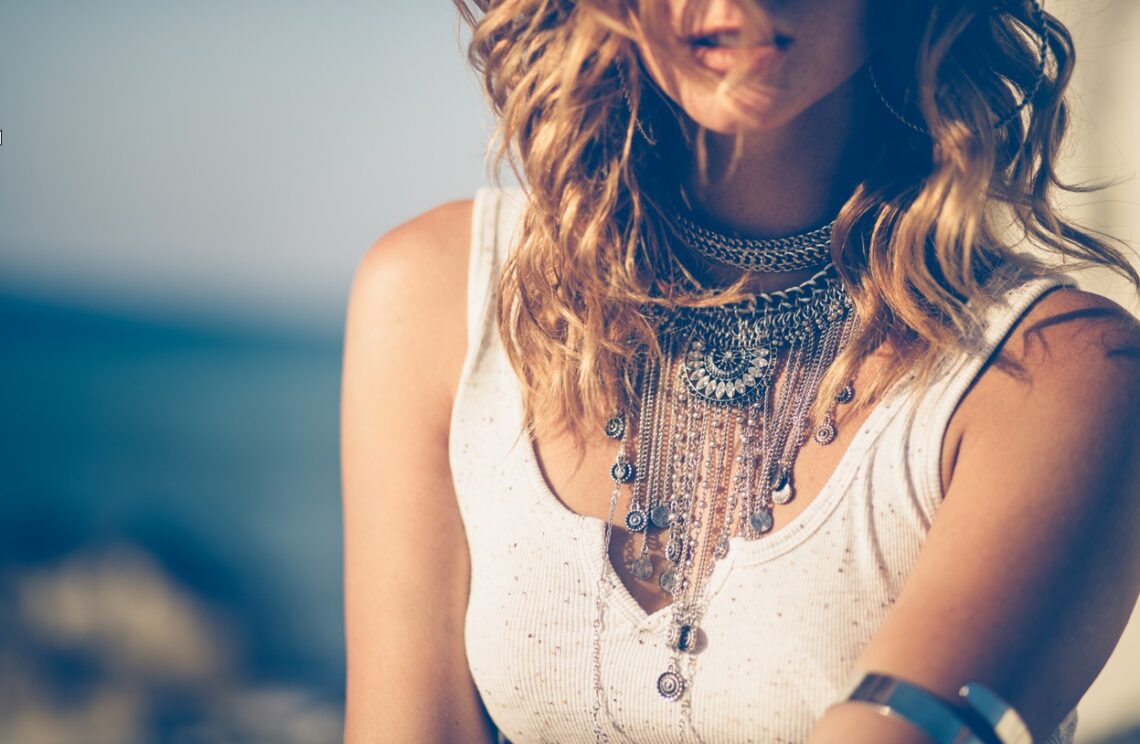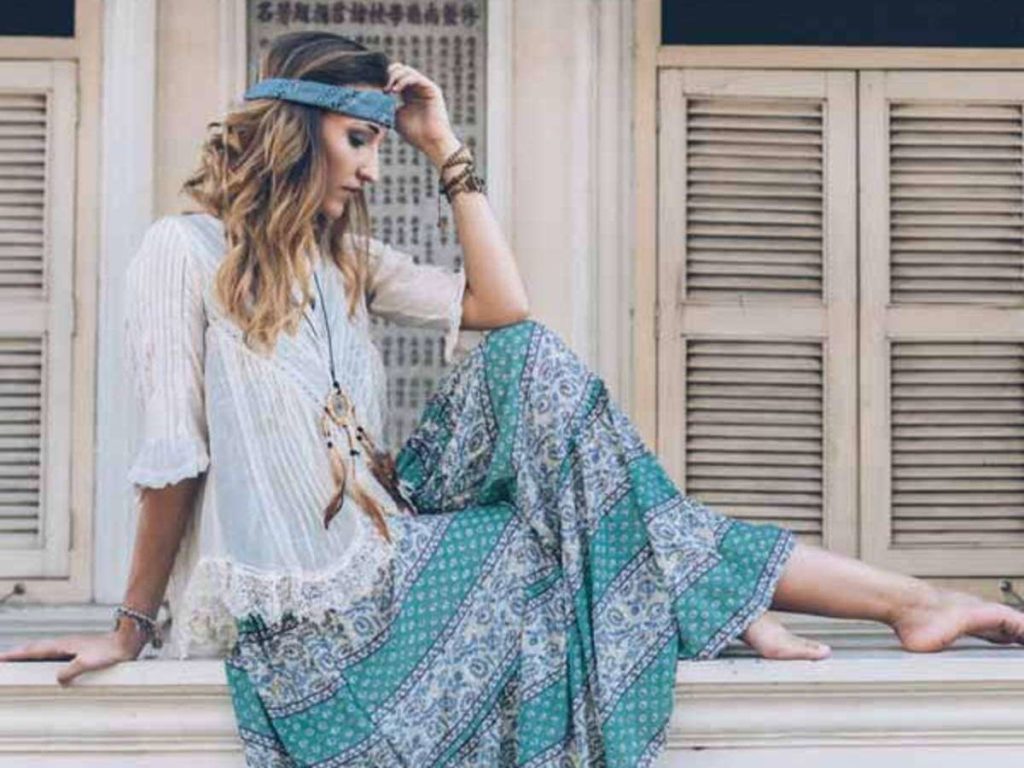Bohemian culture, fashion, and style – where did it come from and how did “boho” become such a buzzword in the past few decades? Boho has become a way to describe hippie fashion, eclectic, luxury interior design, and a free bird, artistic lifestyle. But where exactly did this term and this culture originate from? This article takes a deep dive into the history of bohemianism and its origins, the bohemian people and their ideologies, and how the culture has made its way into fashion and interior design.
What is Bohemianism?
Bohemianism is a lifestyle that was born in France after the French Revolution, consisting of many artists, writers, and musicians who followed a non-traditional way of life. Many bohemian ideals revolve around free love, peace, and artistic expression, typically in opposition to many traditional views on politics and social constructs. Since it was born post-revolution, its birth is rooted in poverty. However, bohemianism eventually contained middle to high-class individuals who in some cases even practiced voluntary poverty, as it aligned more closely with their societal views.
Bohemian people are often confused with the Romani people, thought to have traveled from Bohemia, a region in the Czech Republic. However, both groups were considered to be outsiders to France. Eventually, bohemian culture found its way to America, where popular figures like Walt Whitman and Mark Twain considered themselves bohemian writers.
What is a Bohemian Lifestyle?
A Bohemian lifestyle is loosely defined by spirituality, artistic creation, nomadic tendencies, and sexual liberation. Bearing many similarities to the hippie movement in America during the 1960s, bohemian culture was unfazed by society’s perception of their romantic lifestyles, physical appearances, and even personal hygiene. Many bohemians pursued artistic projects like poetry, songwriting, oil painting, and other forms of creative expression. The bohemian lifestyle became a way to live unapologetically, reject social constructs, and appreciate the fine arts.
Where Did the Term “Bohemian” Come From?
Because Bohemianism was mistakenly thought to have ties to the Romani people, the term had a derogatory connotation towards Roma “Gypsies” – which was a term dubbed to degrade the Romani people. The English term was imported from the French translation of the word, bohemién, which grew in popularity after Henri Murger, a French author, released a literary work titled “Scenes de la Vie de Boheme.” Eventually, the word “Bohemian” was shortened to “boho” and became a way to describe a particular style of fashion and interior design.

What is Bohemian Fashion?
Because Bohemianism was born out of poverty, bohemians typically wore cheap, old, and conventionally unfashionable clothing. With its non-conforming roots, the bohemian style began to rebel against typical French dress with loose-fitting garments, theatrical pieces, and excessive accessorizing. It eventually became a mainstream fashion statement in itself, with many elements of its style still trending to this day. Bohemian fashion is no longer specific to the bohemian people, as it has appeared on many celebrities walking the red carpet and attending music festivals, such as Coachella and Burning Man.
Bohemian fashion is defined by flowy, loose garments like maxi skirts, long dresses, and billowed blouses. Over-accessorizing is popular, with multiple layers of scarves and jewelry. Clothing will typically have earthy tones, but mixing patterns and non-conventionally matching colors is common. Embroidered and fringed pieces are popular, as well, especially layered with big jackets and frayed denim shorts. Because the bohemian lifestyle was born out of romance and sexual freedom, many clothing articles feature deep cleavage and an exposed décolleté.
Modern bohemian fashion, also known as boho-chic, was heavily trending in the 1990s and has been resurfacing from time to time since then. Because of this, many bohemian-style clothing items are produced in the fast fashion industry, which conflicts with historically authentic bohemian ideologies. However, some followers of the boho style purchase their clothing with sustainability in mind. They will repurpose clothing items, purchase them secondhand, or support local artists and artisans in the true bohemian way.
What is Bohemian Style Interior Design?
Bohemian interior design was born in the 19th century by authentic bohemians who valued artistic and creative expression more than they cared about money. Because many of the bohemian pioneers were struggling artists and writers, their homes were decorated mostly with canvases and half-finished papers. There was a heavy nomadic influence on home design, and as a result, decor featured many worldly collections from other countries. As the bohemian interior design developed, it followed a maximalist way of collecting items to decorate the home. Today, bohemian-style interior design follows one rule: there are no rules. This style of interior design mixes and matches items that do not conventionally complement each other, similar to what we see in bohemian fashion.
Modern boho interior design combines various colors, patterns, and textures. Because it is free of rules, it can be as minimalist or maximalist as one chooses. In a boho home, you will see layered area rugs, multiple decorative pillows, textured blankets, and gallery walls. Since bohemians are natural collectors, you can typically see various trinkets and treasures on display throughout the home. True to historical bohemian ideals, the value of artistic expression remains strong – handmade tapestries and macrame are welcomed along with original artwork from local artists. Boho interior design usually features vintage furniture and thrifted, already-loved items, similar to what we see in true repurposed bohemian fashion.
Conclusion – What Does it Mean to Be Boho?
Bohemianism’s roots run deep, originating from France in the 19th century and making its way to America in the 1850s. Because the original bohemian lifestyle was heavily influenced by fine arts, music, and writing, we see many of those elements reflected in boho fashion and interior design. Although the style has adapted and changed over time, the bones of bohemianism remain strong with ideologies still revolving around the unapologetic expression of self, love, peace, art, and sexuality. We see those ideologies reflected in bohemian fashion and interior design with the vibrant mix-and-match of patterns and an eclectic collection of decor. Boho has very much become a buzzword, but with a history as rich as that of bohemianism isn’t hard to see why.






